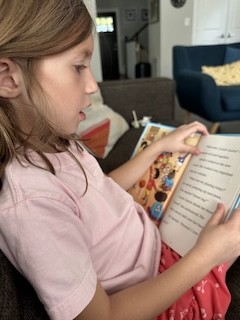Blast from the Past: This blog was first posted on May 28, 2018, and reposted on March 19, 2022. It didn't arouse a lot of comment originally, but recently I've been getting queries that suggest these issues are still out there. I want to emphasize the problem that I'm addressing isn't that teachers are asking comprehension questions (that is a good practice). But, the idea that certain kinds of questions will lead students to be better comprehenders is a fool's errand. Teachers need to get kids doing things that will allow them to think deeply about the content of rich texts: such as, reading and rereading, discussing the content and what makes it important or compelling, writing about the content, using the content in some way, and so on. Answering supporting details questions is not the same thing as getting students to evaluate the support an author provides for his/here claims. This blog, i hope, will help teachers to focus on that kind of work rather than trying to fit questions to standards or trying to mimic the question types from the state tests (actions which don't help students to advance).
Teacher question:
It seems to me that asking a series of good questions about what an author appears to be telling us allows students (all of us) to build our knowledge, learn how to question conclusions, and overall just better understand the text at hand. Do you agree or am I still missing something?
Last week, I posted an explanation of the difference between comprehension strategies and comprehension skills. Before answering your thoughtful question about comprehension teaching, let’s quickly review what I said previously.
Shanahan response:
Basically, comprehension skills have been conceptualized as the ability to answer certain kinds of questions. Accordingly, there is a main idea skill and a comparison skill and a supporting details skill and so on. In their zeal to teach standards-appropriate skills, teachers and publishers transform the standards into questions. Skills teaching devolves into having kids practicing answering those questions.
Skills, by their very nature, are meant to be automatic; someone should learn to implement them without conscious attention.
The problem is that, for the most part, these question types are not really comprehension skills and they do not translate into effective teaching or learning.
Comprehension strategies, on the other hand, have a different history and a different purpose. Comprehension strategies refer to intentional (not automatic) actions a reader takes to keep his/her head in the game. Comprehension strategies include summarization. Not the ability to write a summary, but the use of summarization as a technique for increasing understanding and recall. When reading a challenging text, an effective reader may stop occasionally to sum up the text. Summarizing occasionally during reading, develops a clearer understanding of a text.
Strategies like monitoring, self-questioning, visualizing, comparing the text with prior knowledge, identifying text organization, and so on are all intentional, purposeful actions that are effective in improving comprehension or recall.
Comprehension strategies don’t improve the ability to answer specific kinds of questions, but they have substantial research support showing their ability to improve reading comprehension generally and definitely should be taught.
Instructional implications?
Let’s consider skills first.
The right amount of time to spend on comprehension skills in curriculum, instruction, or assessment? Zero.
Skills practice is a time waster. It’s like pushing the elevator button twice. It makes you feel better, perhaps, but the elevator doesn’t come any more quickly.
Teaching comprehension skills might make you feel like you are doing something, but it won’t improve students’ reading comprehension.
But, this week’s question rightfully queries the practice of guiding reading with questions. Does it make sense to have kids reading texts and then asking them questions about them. Isn’t that just the skills practice that I derided?
E.L. Thorndike first took up this issue in 1917. He assigned readers to two groups; one that just read, and one that read and responded to questions. The question-answerers ended with better comprehension, and researchers started recommending that readers do more than just read in the classroom. Teacher questions and discussion time became a standard of reading instruction practice. (Later research showed that answering questions improves recall for the information questioned, but not for the rest of the information—and the questioned information was more likely to be remembered later (Andre, 1990; Wixson, 1983)).
In the mid-1930s, when publishers started including teacher’s guides along with their basals, following Thorndike, they provided lists of questions to be asked for each story. It was not long before the idea emerged that there were certain kinds of questions that should be asked, and over the years this idea morphed into what we now think of as “comprehension skills.”
It isn’t much of a distance from the idea that questions focus one’s attention, to the possibility that experiences with certain types of questions could more generally focus one’s attention on particular kinds of text information. It’s not that easy, however.
This kind of attention focusing works, but only when the information emphasized is easy to identify and parallel across texts. Students, given multiple text reading tasks, who early on are asked questions about numbers or dates, get better at paying attention to that kind of info in subsequent readings (Anderson, 1977).
However, most question types don’t focus readers’ attention quite this powerfully.
It’s one thing to be on the lookout for the numbers in a text and quite another to draw correct conclusions. Texts are just too varied to allow information-types to be identified easily. Main ideas, inferences, application, interpretation, right there, think and search, relationships, supporting details, comparisons, drawing conclusions, higher-order questions, and so on are all question types that instructional programs or tests claim to emphasize, but none of these are generally identifiable in any useful way by readers. Therefore, they are not likely to have much impact on anybody’s reading ability.
If you ask kids questions that challenge an author’s claims, they’ll probably come away with doubts about the author’s conclusions (and will be more likely to remember those doubts later). Yay, critical reading questions.
However, if the idea is that by asking such questions, readers in the future will be more likely to recognize the short-comings evident in subsequent texts, well that outcome is much less likely.
Indeed, keep having kids read text, and definitely engage them in discussions of those texts, but form your questions--not on the basis of standards or skills lists—but on the basis of the texts themselves. Your questions should lead kids to think deeply about a text and to come away with a coherent and lasting memory of its content and aesthetic qualities.
Reading should be about that; not about answering particular kinds of questions, even if the questions vaguely resemble the ones on your state assessment test.
If there is such a thing as comprehension skills, they are made up of those repeatable things we do while reading that allow us to understand a text. Things like making sense of the meaning of unknown words based on context or morphology. Or, recognizing that a term is an idiom and can’t be looked up in a conventional dictionary. Or, making sense of the complicated grammar of a sentence. Or, making cohesive links among the words and ideas across a text. Or, identifying and using the structure or organization of the text. Or, drawing logical inferences during reading.
These actually are comprehension skills because they enable comprehension and because being able to do them can improve one’s performance with multiple texts.
Readers usually don’t read text looking for information that they could use to answer particular kinds of questions. But they do use the meanings of words again and again, and they do learn to recognize verbs in sentences, and to recognize that authors sometimes use synonyms instead of repeating the same words.
Guiding students in the reading of texts that are difficult to read… and using questions to get them to confront the sources of that complexity and to hold them accountable for learning the content through questioning, discussions, projects, and writing assignments are central to the teaching of reading comprehension.
And, what about strategy instruction? Where does that fit into this picture?
Comprehension strategies should be taught—and, according to research, should be taught using a gradual release of responsibility approach. That just means that the teacher models and explains when, how, and why to implement the strategies. Then the teacher guides students to use the strategies themselves, turning more and more of the responsibility for that over to them gradually.
However, in our pendulum-oriented field, we have a tendency to either ignore the teaching of strategies altogether (which disadvantages kids since strategies can help them to be active as readers and focused on making sense of texts), or to teach strategies ad nauseum.
Studies of strategy teaching usually have examined brief regimens of instruction, so it’s fair to say that we may be overdoing it a bit. (Strategy teaching is a research-based idea but teaching strategies 180-days a year for 12-13 years has nothing to do with research). There are no studies evaluating the diminishing returns of strategy instruction, but for most kids 6-10 weeks of such teaching each year is likely plenty. But even during strategy teaching, there needs to be a major focus on mastering the content of the texts; that’s the only purpose for the strategies in the first place, and kids should see, from the beginning, that they work in helping accomplish that goal.
What does it mean to teach reading comprehension?
Guide kids to read—and reread—challenging texts with thoughtful questions.
Get kids to think deeply about the parts of the text that might trip up their understanding.
Teach kids to keep their heads in the game—reading mindfully—through strategy use.
Make sure kids come away knowing more about their world each time they read.
What should you avoid?
Having kids practice answering certain kinds of questions.
Placing greater emphasis on comprehension skills and strategies than on the content of the texts being read.







Comments
See what others have to say about this topic.